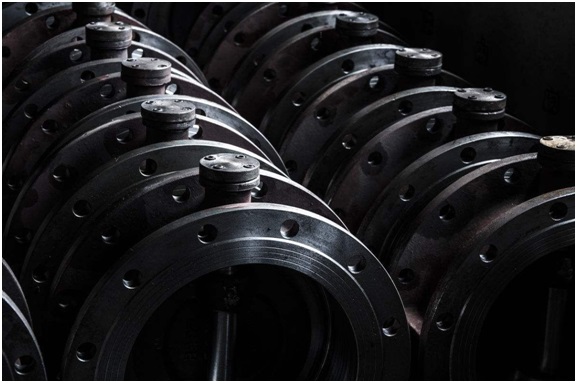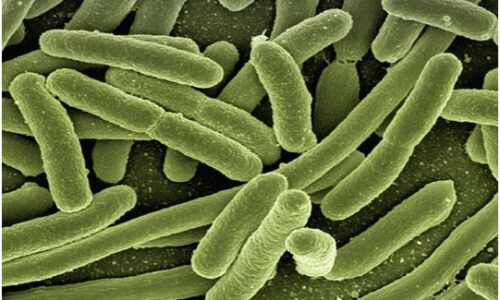Butterfly valve is known to be compact and lighter than other types of control valve. This reason makes them an excellent option for controller flow in a lot of industrial operations. Conventionally, usual butterfly valves were used for programmed off andon applications- a task that suits them well. Yet, some experts regard them as unacceptable when it steps in to flow regulation in a closed-loop method.
Butterfly valves have a rotating disc used to regulate flow by a pipe. They are called the quarter-turn valve for having a disc that is operable in ninety degrees. If a tight shutoff required, then butterfly valve with resilient elastomer seal and coated disc deliver the rest of the necessary efficiency.

Advance butterfly valve is now the epitome for industrial butterfly control valve, which are mostly used for control. A factor that leads the butterfly valves to increase its market size. Check out this post for more information.
What are High-Performance Butterfly Valves?
High-performance butterfly valves or HPV are categorized into two: the double offsets and triple offsets.
Double Offset Butterfly Valve
This valve’s disc and stem are double offset causing the disc to rotate into place upon closure without significant seat contact. The disc can leave the seat quickly, diminishing unnecessary scraping and squeezing between two components. Because of this, the valve prolongs its life for the wearing process is decreased.
Triple Offset Butterfly Valve
This valve is designed based on the features and structure of a double offset butterfly valve. The difference would be the additional offset present in this high-performance valve.
The first two offsets are located in the same position as the double offset would have. While the remaining offset is aligned on the seating surface, making a cone shape type of the disc and seat. The coney angle with two offsets allows the disc to seal along with the seat with no occurrence of friction.
Industries That Rely on HPV
- oil and gas
- power generation
- water and wastewater treatment
- chemical
- pulp and paper
- shipbuilding
- aircraft
- HVAC
Strengths
The edges of high-performance butterfly valves involve:
- They have the minimum installed cost of other valves type, especially the larger sizes.
- These valves weigh much less than other type of valve and are more compact.
- They propose excellent shutoff performance even on high-temperatures.
- They are available in various body designs such as a wafer,flanged structures and lugged.
Limitation
Butterfly valve do have drawbacks that make unfit for flow control in some operations. These involve:
- Limited capacity in pressure drop compared to globe valves, with the potential for flashing or cavitation.
- Usual butterfly valve is usually not used in high-pressure operations.
- Over sizing butterfly control valve have a negative impact –
- Over sizing sets very much gain in valve, making it less flexible when the controller needs to be adjusted.
- The usual throttling control limit of butterfly valves is not extensive as globe valves and segmented ball valves.
Excellent Control Performance
HPVs are intended for general service operations that do not need precise throttling control. Usually, they are used in operations needing large sizes that can handle high-temperatures since they have lesser cost compared to other control valves.
Generally, when a loop functions linearly and the operation gain is near to unity, a loop can be controlled at ease. A control loop is an operational management structure designed to sustain a process variable at the desired set point.
Thus, an operation gain of 1.0 arrive objective for excellent loop control, with a standard range of point five to two. If performance gain isn’t within the standard range, then poor progressive performance and erratic loop may occur — superior performance outcome when mostly loop gain is from the moderator.
Butterfly valves disc design has an important effect on the valves flow rate and valves traveling from close to open. Disc with an innate equal percentage features can help better recompense for varying pressure drops whenever flow change.
Butterfly valve currently available with discs having an natural same amount flow attribute, which results in develop throttling control. They can manage closer to the object set up point regardless operation disturbances. This results in a wane in process inconstancy.
Butterfly Valve Market Size
The butterfly valve trade is expected to reach more than $13 million by 2025, from a compound annual growth rate of 6.3% in a 7-year forecast starting 2018. Best butterfly valve manufacturers such as Emerson, AVK Group, Flowserve Corporation, and others are some of the leading players in the butterfly valves trade worldwide. The following factors drive the market growth of butterfly valves:
- Amplifying the demand from the petroleum industry.
- There is progress in the number of industrial infrastructures.
- The surge in the utilization of power in industrial processes.
- The rise in demand for need for automation in the process industries.
On the contrary, the increase in competition from domestic players and high threat of corrosion is expected to delay the rise of the butterfly valves market.
Conclusion
In summary, double offsets and triple offsets are high-performance butterfly valves. They have their advantages, disadvantages, and HPBFVs are known to have throttling control. Their market size is increasing each year and forecasted to have over $13 million income by 2025.

